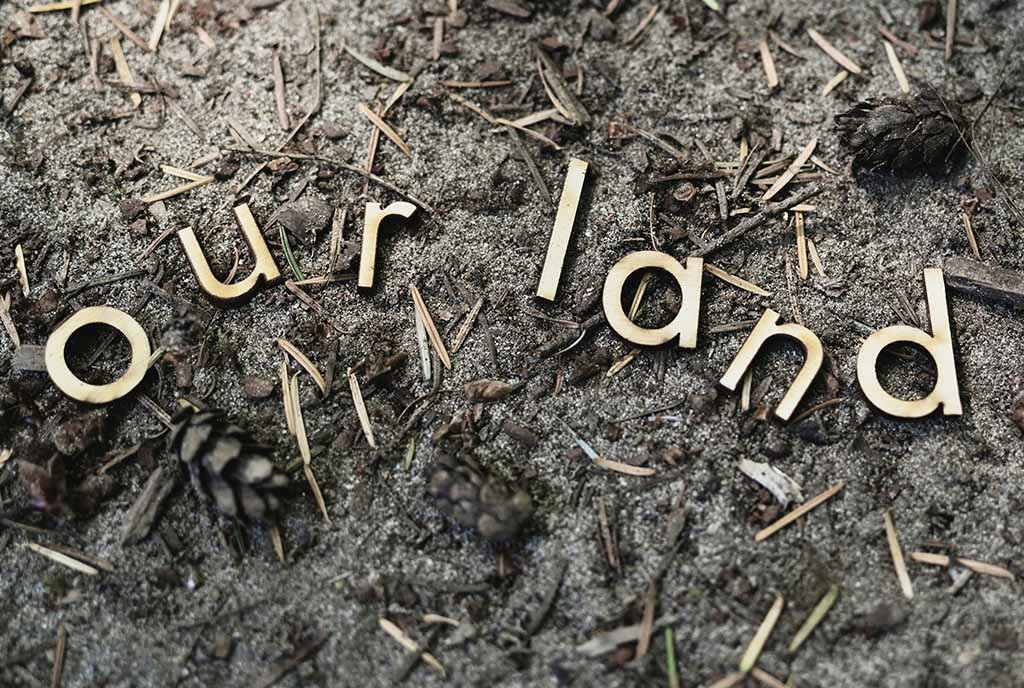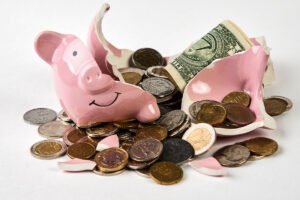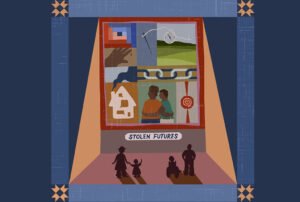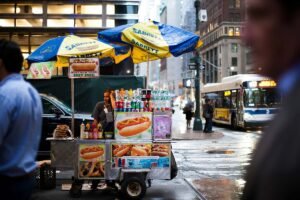
There is no racial justice in the United States without land justice. Healing justice and Land Back campaigns are receiving more attention these days, but too often they are each addressed in isolation from the other. Yet reclaiming land, healing justice, and building power are intimately connected.
One example is from Indigenous People’s Day this year when the Winnemem Wintu Tribe purchased 1,080 acres of their ancestral lands. The original people of Buliyum Puyuuk (Mount Shasta) and the Winnemem Waywaket (McCloud River), the Winnemem Wintu had been systematically forced off their land and murdered by state-sponsored militias. These militias, funded by both the state of California and the federal government, were paid bounties for the murder of Indigenous people; members of these militias were then eligible to get land from the federal government, effectively receiving land stolen from Native people as payment for killing them.
Now, on their repurchased ancestral lands, the Winnemem Wintu will have a safe place to practice their ceremonies without having to seek permission from state or federal governments. They will be able to create housing for displaced members of their community as they rebuild their villages—and live in their homeland where they can continue to revitalize their language and culture.
This is far from an isolated occurrence. Below we share additional stories of how land recovery (described within the frameworks of land rematriation and land reclamation) can be a healing process, how land can anchor power building, and how funders can partner with the groups leading this work and embrace interconnections.
Land Rematriation and Reclamation
“We did not own the land, we belonged to it.”
People come to land-based healing and rematriation for different reasons—some due to having been stolen from their lands and brought to the Americas in chains; others from having had their land stolen and being forcibly removed. And then there are those in diasporic communities who were compelled to leave their land due to systemic economic forces, violence, war, famine, or climate catastrophe.
As members of the Sogorea Te’ Land Trust on Lisjan (Ohlone) land in the San Francisco Bay Area describe it, land rematriation means “to restore a people to their rightful place in sacred relationship with their ancestral land.” Rematriation is about returning to a state of reciprocal responsibility between a people and the land.
In philanthropy, people often talk about Indigenous people returning to “steward” their homelands, which reflects an understanding that “ownership” is not the way that many Indigenous people see their relationship to land. However, “stewardship” may still be a limited way of understanding the relationship to the land for Indigenous communities. The members who comprise the Sogorea Te’ Land Trust describe the relationship that Lisjan people have to the land called the East Bay of the San Francisco Bay Area, by saying, “We did not own the land, we belonged to it.”
This view is not unique to the Lisjan. In Massachusetts, Jennifer Randolph, a member of the Wampanoag Tribe of Gay Head Aquinnah and the executive director of the Northeast Native Network of Kinship and Healing, shared that for at least 12,000 years, generations of her ancestors lived, prayed, and were buried in their ancestral lands, on the island of Noepe, which White colonial settlers named Martha’s Vineyard. As Randolph said to us, the grass, the trees, the deer are literally her ancestors. She is not speaking in metaphor. Her ancestors are, according to her worldview, part of all living things in that land and ecosystem.
For Black communities, land reclamation holds its own meaning. Historically, Black people have been dispossessed of land in the United States through enslavement, violence (including lynching), and discriminatory laws and practices. Policies such as redlining, racial covenants, and other forms of institutionalized racism have blocked Black people from obtaining the capital to achieve land ownership for hundreds of years. According to Black Organizing for Liberation and Dignity (BOLD), having the ability to reclaim land represents “freedom from oppressive systems and spaces.”
BOLD’s effort to steward 105 acres of land in Georgia harkens back to maroon societies where Africans “escaped slavery to live as free men and women in self-governing societies away from plantations.” For BOLD, having access to this land has created a sense of home, both as an organizer training space and as a place where their community can be “nurtured and cared for, and where they can find nourishment, rest, and safety.”
Healing Relationships and Building Community
The process of healing through connecting with land can happen in many different contexts, both in terms of rebalancing ecosystems and rebuilding communities.
The work of the Winnemem Wintu, mentioned above, provides a pertinent example. For this group, returning salmon to the McCloud River is key to community rebuilding. In 1945, many Winnemem Wintu villages and sacred sites were flooded and destroyed with the opening of the Shasta Dam. The dam also blocked the spawning routes and pathways for salmon to return to the place on the McCloud River where they had laid their eggs for millennia. Creating a salmon bypass would allow salmon to swim past the Shasta Dam and access their traditional spawning areas once again.
The Winnemem Wintu describe themselves as Salmon People. They have a sacred duty to protect the salmon, but their relationship goes beyond what many of us may understand as “protection.” From a Western perspective, “protection” still falls within a worldview in which humans have dominion over animals. The Winnemem Wintu instead engage in a relationship with the salmon that views the welfare of humans and salmon as interdependent. Winnemem Wintu elders have said that if the salmon cannot return to the McCloud River and they die out, the Winnemem people will also die.
Part of the process of healing includes healing our relationship to capital, including transitioning from the commodification of land.In addition to restoring the salmon, the Winnemem Wintu also plan to create an Indigenous eco-village to highlight ways Indigenous land practices can restore the health of the water, land, plants, and animals, including fire management practices that for generations prevented large-scale wildfires like the ones we now experience regularly.
From Land Reclamation to Power Building
Understanding the intersections of land and healing also demonstrates how healing justice and land-based work help communities build wealth and power.
Sign up for our free newsletters
Subscribe to NPQ's newsletters to have our top stories delivered directly to your inbox.
By signing up, you agree to our privacy policy and terms of use, and to receive messages from NPQ and our partners.
Part of the process of healing includes healing our relationship to capital, including transitioning from the commodification of land—which assigns financial value based on production potential and other forms of speculation—to a reciprocal, restorative relationship.
A restorative relationship with land affirms land’s intrinsic value, including its healing properties and its capacity to shelter, feed, and support life of all kinds. It also requires the healing and strengthening of interpersonal relationships, especially within communities that have been forcibly separated from the land and one another and continue to face harm and trauma at the hands of oppressive systems. This interpersonal healing is an essential ingredient for effective, deeply democratic community governance, traditional Indigenous forms of governance, and self-determination.
The relationship between healing, land, and power building is evident in the work of Jubilee Justice, an organization based in Louisiana that heals and transforms the wounds suffered by the people and the land through reparative genealogy and regenerative agriculture. Konda Mason, the founder of Jubilee Justice, speaks about how transformation happens at the intersection of land, race, money, and spirit.
The organization’s Black Farmers’ Rice Project is a cooperative that owns and runs a rice mill and engages in extensive research on growing rice using regenerative, climate-friendly, and organic methods. Through this rice mill, Black farmers are able to reconnect to a crop that they have an ancestral connection to growing: historically, rice has been a staple for African people, and Africans were forcibly brought to the United States as slaves to implement their own rice-growing methods. The work happening at the rice mill now is both healing for the land that has been harmed by industrial agriculture and healing for the people who are able to have autonomy and ownership over the production of this crop after a painful ancestral history of slavery and sharecropping.
Ultimately, these efforts create collective power through the sovereignty and self-determination that come from people generating their own income through food production while governing and sustaining land together.
Simply put, having land enables communities to develop the economic base necessary to be able to build self-sufficiency, autonomy, and power.
Why Supporting Land Return Is an Impactful Philanthropic Approach
Both of us work for the Kataly Foundation. As a spend-down foundation, Kataly is particularly interested in redistributing resources in ways that will lead to sustainable community-based economies. Philanthropic support for shifting land titles to Indigenous nations and other BIPOC communities who have suffered from land loss builds power and leadership in a way that can help these communities rely less on philanthropy in the future.
Simply put, having land enables communities to develop the economic base necessary to be able to build self-sufficiency, autonomy, and power. Land can help a community generate income by renting out portions to paying clients; land can help a community practice self-reliance by growing food and creating microgrids to be able to thrive in climate emergencies when electricity may be out for days or weeks. Land can also be employed in economic development efforts to grow food or plant-based medicines to generate community income.
A secure land base benefits communities in many other far-reaching ways, including providing the ability to develop cooperative businesses on the land, implement regenerative ecological practices, grow healthy food, and build affordable housing. Moreover, land offers community stability that is conducive to intergenerational healing, such as having the space to engage in practices that support cultural preservation.
Some Resources to Support Land Rematriation
Funders who want to support healing justice, land rematriation, and integrated approaches to building power have many resources from which they can learn. For instance, Queer Projects on Indigenous Land is a webinar hosted by Sogorea Te’ Land Trust, which features queer land stewards and Indigenous organizations discussing how queer land-based projects can be in relationship with and accountable to Indigenous people on whose land they are creating their projects.
Other groups with resources on Land Back and healing justice include Funders for Justice, Seventh Generation Fund, NDN Collective, Native Voices Rising, and the First Nations Development Institute.
Land Justice is Racial Justice
Ultimately, we will not have racial justice in this country without land justice. In a country built on stolen land and stolen labor, and where Black, Indigenous, and other people of color have been systematically locked out of land ownership, the act of returning land to BIPOC communities advances both resistance and healing.
For so many, land was stolen or cheated out from under our ancestors by state or individual actors. The destructive impacts have been a significant cause of the racialized economic disparities that exist within our society today.
Within this context, rematriating land creates opportunities for deep healing among those who have experienced the harm of land loss has over generations. Collective land ownership and community governance can provide safe spaces for communities to come together for healing and restoration, as well as organizing and power building.
Gaining control over land, in short, is a vital tool to enable our communities to reimagine the world that is possible when they have self-sufficiency and self-determination.








